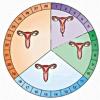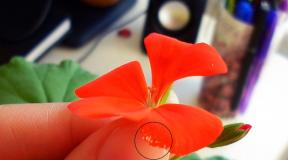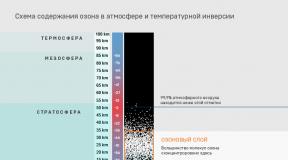polarizing microscopy. Types of microscopy. Phase contrast microscopy method
Phase contrast microscopy method
Most of the cellular structures differ little in the refractive index of light, the absorption of rays from each other and the environment. In order to study such components, one has to change the illumination (with a loss of image clarity) or use special methods and devices. Phase-contrast microscopy is one such method. It is widely used in the vital study of cells. The essence of the method is that even with very small differences in the refractive indices of different elements of the drug, the light wave passing through them undergoes different phase changes. Invisible directly neither to the eye nor to the photographic plate, these phase changes are converted by a special optical device into changes in the amplitude of the light wave, i.e., into changes in brightness that are already visible to the eye or are recorded on the photosensitive layer. In the resulting visible image, the distribution of brightness (amplitudes) reproduces the phase relief. The resulting image is called phase contrast. Objects can appear dark against a light background (positive phase contrast) or light against a dark background (negative phase contrast).
Interference contrast method (interference microscopy)
The method of interference contrast is similar to the previous one - they are both based on the interference of rays that have passed through the microparticle and passed it. A beam of parallel light rays from the illuminator splits into two streams, entering the microscope. One of the obtained beams is directed through the observed particle and acquires changes in the oscillation phase, the other - bypassing the object along the same or additional optical branch of the microscope. In the ocular part of the microscope, both beams reconnect and interfere with each other. As a result of interference, an image will be built, on which sections of the cell with different thicknesses or different densities will differ from each other in terms of contrast. The interference contrast method is often used in conjunction with other microscopy methods, in particular, observation in polarized light. Its use in combination with ultraviolet microscopy makes it possible, for example, to determine the content of nucleic acids in the total dry mass of an object.
Polarizing microscopy
Polarizing microscopy is a method of observing in polarized light objects that have isotropy, i.e. ordered orientation of submicroscopic particles. A polarizer is placed in front of the condenser of a polarizing microscope, which transmits light waves with a certain plane of polarization. After the preparation and the lens, an analyzer is placed, which can transmit light with the same plane of polarization. If the analyzer is then rotated by 90o with respect to the first one, no light will pass through. In the event that between such crossed prisms there is an object that has the ability to polarize light, it will be seen as glowing in a dark field. Using a polarizing microscope, one can verify, for example, the oriented arrangement of micelles in the plant cell wall.
POLARIZING MICROSCOPY
POLARIZING MICROSCOPY
Physical Encyclopedic Dictionary. - M.: Soviet Encyclopedia. . 1983 .
POLARIZING MICROSCOPY
-
see Art. Microscopy.
Physical encyclopedia. In 5 volumes. - M.: Soviet Encyclopedia. Editor-in-Chief A. M. Prokhorov. 1988 .
See what "POLARIZING MICROSCOPY" is in other dictionaries:
POLARIZING MICROSCOPY- microscopy, based on the ability of different components of cells and tissues to refract polarized rays. In a polarizing microscope, you can examine objects that are characterized by birefringence ... Glossary of botanical terms
A set of methods (and devices that provide these methods) designed to observe and study objects under a microscope that change in any respect the polarization of light (See Polarization of light) that passes through objects ... ...
POLARIZING MICROSCOPY- see Microscope, Microscopic technique ... Veterinary Encyclopedic Dictionary
The general name for the methods of observing objects indistinguishable by the human eye through a microscope. See Art. (see MICROSCOPE). Physical Encyclopedic Dictionary. Moscow: Soviet Encyclopedia. Editor-in-Chief A. M. Prokhorov. 1983... Physical Encyclopedia
M. when illuminating an object with polarized light; is used to detect and study objects or their structures that have the properties of birefringence ... Big Medical Dictionary
Term scanning probe microscopy English term scanning probe microscopy Synonyms Abbreviations SPM, SPM Related terms smart materials, atomic force microscopy, atom manipulation, cantilever, microscope,… … Encyclopedic Dictionary of Nanotechnology
Ways to study various objects using a microscope. In biology and medicine, these methods make it possible to study the structure of microscopic objects whose dimensions lie beyond the resolution of the human eye. The basis of M.m.i. makes up…… Medical Encyclopedia
- (from Greek ἱστός tissue and Greek λόγος knowledge, word, science) a branch of biology that studies the structure of tissues of living organisms. This is usually done by dissecting tissue into thin layers and using a microtome. Unlike anatomy, ... ... Wikipedia
Microscope (from micro... and Greek skopéo I look), an optical device for obtaining highly magnified images of objects (or details of their structure) invisible to the naked eye. The human eye is a natural optical ... ... Great Soviet Encyclopedia
I Microscope (from Micro... and Greek skopéo I look) an optical device for obtaining highly magnified images of objects (or details of their structure) invisible to the naked eye. The human eye is a natural ... ... Great Soviet Encyclopedia
Books
- Introduction to Quantitative Cytochemistry, . A summary of the quantitative methods of studying the cell and the optical equipment used for this. The focus of the book is on the most reliable methods for quantifying…
Polarizing microscopy
Polarizing microscopy makes it possible to study objects of study in light formed by two beams polarized in mutually perpendicular planes, i.e., in polarized light. To do this, filmy polaroids or Nicol prisms are used, which are placed in a microscope between the light source and the preparation. Polarization changes when light rays pass through various structural components of cells and tissues, the properties of which are inhomogeneous, or when reflected from them.
In optically isotropic structures, the propagation velocity of polarized light does not depend on the plane of polarization; in anisotropic structures, it varies depending on the direction of light along the longitudinal or transverse axis of the object. If the refractive index of light along the structure is greater than in the transverse direction, positive birefringence occurs, with reverse relationships - negative birefringence. Many biological objects have a strict molecular orientation, are anisotropic, and cause positive light birefringence.
Dark field microscopy
During microscopy using the dark field method, the preparation is illuminated from the side with oblique beams of rays that do not fall into the objective. Only rays enter the lens, which are deflected by the drug particles as a result of reflection, refraction or diffraction. Because of this, microbial cells and other particles appear to glow brightly against a black background (the picture resembles a twinkling starry sky).
For dark field microscopy, a special condenser (paraboloid condenser or cardioid condenser) and conventional objectives are used. Since the aperture of the immersion objective is larger than the aperture of the dark field condenser, a special tubular diaphragm is inserted inside the immersion objective to reduce its aperture.
Polarizing microscopy— one of the highly effective methods of morphological research, which has a wide range of possibilities for identifying biological structures, which, combined with accessibility and relative simplicity, determines its high value. The method allows to study not only the histological structure of the preparation, but also some of its histochemical parameters. In the 40-50s of the XX century. polarization microscopy was considered to be an ultrastructural method, since it made it possible to see the ultrastructural abilities of tissues.
Polarization microscopy is designed to study the properties of histological structures that have the ability of birefringence (anisotropy) - bifurcation of a light beam when it passes through an anisotropic medium. A light wave in an anisotropic medium breaks up into two waves with mutually perpendicular planes of oscillations of electromagnetic waves. These planes are called planes of polarization. Polarized light differs from ordinary (unpolarized) light in that in the latter, light wave oscillations occur in different planes, while in polarized light they occur only in a certain plane.
To create the effect of polarization in a polarizing microscope, two polaroids are used. The first, which is called a polarizer, is placed between the microscope illuminator and the histological preparation. The second polaroid, located between the histological preparation and the researcher's eye, is the analyzer. Both the polarizer and the analyzer are optically exactly the same polarizing filters, so they can be interchanged (if the microscope design allows it). Previously, Nicol, Ahrens, or Thomson prisms made from Icelandic spar were used for polarizing microscopy. These prisms had a limited angle of light refraction. Currently, flat polarizing filters are used instead, producing wide-field polarized light.
The relative position of the polarizer and analyzer relative to the optical axis of the microscope plays a decisive role in the creation of polarized light. If they are oriented in such a way that both transmit polarized light in the same plane, i.e. when their polarization planes coincide, both polarizing filters are capable of transmitting polarized light; the field of view of the microscope is bright in this case (Fig. 1a).
Rice. 1 Human lung preparation in bright field, OlympusCX41, 10x objective
If the planes of polarization of the polarizing filters are mutually perpendicular (this is achieved by rotating the analyzer by 90° around the optical axis of the microscope), then the polarized light does not pass and the researcher sees a dark field of view (Fig. 2).
When the polarizer is rotated 360° during its rotation, the field of view is twice completely darkened and twice completely enlightened. In the past, Bernauer compensatory filters have been used, in which the darkened field of view has a reddish tint ( U-TP530 ). When black specular filters are applied, the darkened field of view does not appear completely dark, but faintly illuminated.

Fig. 2 Human lung preparation in polarized light, 10x objective
In those cases when, with the crossed position of polarizing filters (i.e., in orthoscopies), anisotropic substances contained in a histological specimen are encountered in the path of polarized light, these substances split the polarized light into two beams with mutually perpendicular planes of light wave oscillations. Light rays with an oscillation plane coinciding with the plane of polarization pass through the analyzer, and with a perpendicular one they are cut off, as a result of which the intensity of the light flux entering the researcher's eye and the camera is only half the intensity of the initial light beam. As a result of the described processes, anisotropic substances located between two crossed polarizers are visible against a dark background in the form of bright luminous objects. In this case, isotropic structures that do not have the ability of birefringence remain dark.
It also affects the choice cameras for polarizing microscopy. Since the task is to capture small light signals against a dark background, a camera for bright-field microscopy may not usually be sufficient due to the low sensitivity of the camera and the large amount of noise that is generated during shooting. For shooting in polarizing microscopy you need a camera for microscopy with high sensitivity and accurate color reproduction. It is preferable to use cameras based on CCD matrices ( , VZ-CC50S), however, at the current stage, you can also use budget options for cameras based on Sony IMX series CMOS matrices ().
Biological tissues contain a sufficient number of anisotropic structures: elements of the contractile apparatus of muscles, amyloid, uric acid, collagen formations, some lipids, a number of crystals, etc.
The light rays split in an anisotropic object and passing through the analyzer are characterized by unequal wave propagation speed. Depending on the magnitude of this difference (it is also called the amount of delay of the light beam) and from differences in light absorption in the analyzer, the glow of anisotropic objects can be white or colored. In the latter case, we are talking about the phenomenon of dichroism ( double absorption I). Color effects in the study in the field of polarization give, for example, many crystals.
The process of birefringence can be enhanced by the use of certain dyes, the molecules of which have the ability to be oriented deposited on anisotropic structures. Histochemical reactions, which result in the effect of anisotropy, are called topooptical reactions (G. Romhanyi). There are two types of such reactions - additive and inverse. With additive reactions, the delay of the light beam increases, which is called positive anisotropy; with inverse reactions, it decreases - negative anisotropy.
APPARATUS AND EQUIPMENT
Polarizing microscopy is carried out using special polarizing microscopes. As an example, we can name imported microscopes,. Most modern optical microscopes are equipped with accessories for polarizing microscopy.
For polarizing microscopy, any light microscope of laboratory and research grade can be adapted. It is sufficient to have two polarizing filters, one of which, acting as a polarizer, is placed between the light source and the specimen, and the other, which plays the role of an analyzer, is placed between the specimen and the researcher's eye. The polarizer can be built into the condenser or placed below it above the field diaphragm, and the analyzer can be placed in the revolver slot or an intermediate insert.


On fig. 3 is a schematic diagram of a polarizing microscope. In addition to the components common to all light microscopes, a polarizing microscope has two polarizing filters (a polarizer, usually placed under the condenser, and an analyzer, located in the eyepiece), as well as a compensator. The analyzer must necessarily rotate, and an appropriate graduated scale is necessary to determine the degree of rotation.
A polarizing microscope uses an illumination source that provides a high light beam density. A 100 W lamp with a voltage of 12 V is recommended as such a source. For some types of research, monochromatic light is required. For this purpose, a metal interference filter is used, which is best placed above the mirror. The light-scattering frosted glass is placed in front of the polarizer, i.e. between it and the light source, but in no case after the polarizer, since this violates the function of the polarizing filter.
In the past, achromatic objectives without internal tensions were used for polarizing microscopy, but these are now rare. To date, in a polarizing microscope, only plan achromatic objectives are used, which do not have internal tensions. Apochromatic lenses can be used only in cases where normal color reproduction is required for microphotography.
Polarizing microscopes are equipped with a rotating object stage, the position of which relative to the optical axis can be changed. The angle of rotation of the table is measured using a degree scale marked on its circumference. One of the prerequisites for the effective use of polarizing microscopy is the careful centering of the rotating stage using the centering screws.
An important element of a polarizing microscope is a compensator placed between the objective and the analyzer, usually in the microscope tube. The compensator is a plate made from special varieties of gypsum, quartz or mica. It allows you to measure the difference in the path of split light rays, expressed in nanometers. The functioning of the compensator is ensured by its ability to change the difference in the path of light rays, reducing it to zero or increasing it to a maximum. This is achieved by rotating the compensator around the optical axis.
METHOD OF MICROSCOPY IN POLARIZED LIGHT
It is more convenient to carry out polarization microscopy in a darkened room, since the intensity of the light flux entering the researcher's eye decreases by 2 times compared to the original one. After turning on the illuminator of the microscope, the brightest possible illumination of the field of view is first achieved by rotating the polarizer or analyzer. This position of the polarizing filters corresponds to the coincidence of their polarization planes. The drug is placed on the object table and studied first in a bright field. Then, by rotating the polarizer (or analyzer), the field of view is darkened as much as possible; this position of the filter corresponds to the perpendicular arrangement of the planes of polarization. In order to reveal the effect of anisotropy, it is necessary to combine the plane of polarization of an anisotropic object with the plane of polarized light. Empirically, this is achieved by rotating the object stage around the optical axis. If a light microscope is used for polarizing microscopy, which is not equipped with a rotating stage, then it is necessary to rotate the histological preparation manually. This is permissible, however, in this case, it is impossible to carry out certain types of polarizing microscopy that require a quantitative assessment (determination of the sign of birefringence, the magnitude of the difference in the path of light rays).
If anisotropic objects in the studied preparation are arranged in an orderly manner (for example, anisotropic disks of striated muscle fibers), it is convenient to study them in a fixed position of the stage, at which these objects give the maximum glow against a dark background. If, however, anisotropic structures are arranged randomly in the preparation (for example, crystals), then during their study it is necessary to constantly rotate the object table, achieving the glow of one or another group of objects.
To conduct a more in-depth analysis and evaluation of topooptic reactions, it is necessary to know the method for determining the relative sign of birefringence, the magnitude of the difference in the path of rays and the index (coefficient) of refraction.
The sign of birefringence characterizes the degree and direction of displacement of the light rays passing through the analyzer. This shift is caused by topo-optical dyes, and in the event that it is directed towards a decrease in the difference in the path of the rays, one speaks of a negative sign of birefringence ( negative anisotropy), but if it contributes to an increase in the difference in the path of the rays, then the positive sign of birefringence is ascertained ( positive anisotropy). If the difference in the path of the rays disappears, then the effect of anisotropy is leveled.
The sign of birefringence is determined using a compensator. The procedure for its application is as follows. The object under study is placed in a position at which the maximum glow of anisotropic structures is achieved in the dark field of view. The plate of the RI-compensator is rotated around the optical axis at an angle of +45° with respect to the plane of polarization of the analyzer. The object, depending on the difference in the path of light rays, which can range from 20 to 200 nm, acquires either blue or yellow color. In the first case the sign of birefringence is positive, in the second it is negative. It should be borne in mind that in the case when the compensator is located at an angle of +45°, the general background of the darkened field of view has a red tint.
You can also use the λ/4 compensator (U-TP137). The procedure for its application is the same, only the field of view has a gray tint instead of red, and the object glows with a positive sign of refraction, and is darkened with a negative one.
Quantitative determination of the difference in the path of light rays, expressed in nanometers, is carried out using the Köhler Braque compensator. To do this, use the formula:
Γ=Γλ×sinφ
where λ is a constant put on the compensator by the manufacturer, φ is the angle of rotation of the compensator relative to the analyzer polarization plane.
The refractive index of an anisotropic object is determined by comparing it (under a microscope) with a test object placed nearby. Standard liquids with a known refractive index are used as test objects. The object and sample are placed side by side on the stage. If their refractive indices do not match, a bright line is visible between the object and the sample, called the Beck line. Raising the microscope tube relative to the focused position causes a shift of the Beck line towards the medium, which gives a more pronounced effect of refraction. When the coefficients of refraction of the object and the sample coincide, the Beck line disappears. Usually, the refractive index is determined in monochromatic light for the sodium line of the spectrum (at a wavelength of 589 nm and a temperature of 20 ° C). The refraction should be determined for two mutually perpendicular planes of polarization. For this purpose, the analyzer is removed and the refraction of the object is recorded in its two mutually perpendicular positions. The difference between the two refractive indices (ng - nk) characterizes the refractive power.
FEATURES OF PROCESSING MATERIAL AND PREPARATION OF PREPARATIONS
Fixation of the material for polarization microscopy in acid formalin is undesirable, since the formalin pigment formed during the interaction of tissue hemoglobin with acid formaldehyde has anisotropic properties and makes it difficult to study preparations in polarized light. G. Scheuner and J. Hutschenreiter (1972) recommend using 10% neutral formalin, Baker's calcium-formol solution, Carnoy's liquid for this purpose.
The duration of fixation in 10% neutral formalin is 24-72 hours at 4°C, in calcium-formol solution according to Baker - 16-24 hours at 4°C. Fixation in calcium formol is especially preferred in the study of lipid-protein compounds. Carnoy's fluid quickly permeates fabrics. Pieces with a thickness of 1 - 2 mm are profiled after 1 hour at a temperature of 4 ° C. For the study of lipids, fixation in Carnoy's fluid is unsuitable. In addition, Zenker's liquid is used, especially when impregnating with salts of gold and silver. After treatment with a mixture of Zenker's liquid and acetic acid, erythrocytes acquire the ability to birefringence.
When examining dense tissues (bones, teeth) in a polarizing microscope, in addition to acid decalcification, additional processing is necessary to remove collagen fibers. For this purpose, sections of such tissues are boiled for several minutes in a mixture of glycerin and potassium hydroxide (10 ml of glycerol and 2 grains of potassium hydroxide) until completely white, then the alkali is carefully drained, the section is washed in water and transferred with tweezers to the microscope stage.
For polarizing microscopy, paraffin, frozen and cryostat sections are used. Unstained frozen sections for polarized light examination are embedded in glycerol. Unfixed cryostat sections are suitable for polarization microscopic analysis immediately after preparation. Due to their high sensitivity to the damaging effect of various environmental factors, these sections are still recommended to be fixed in 10% neutral formalin or calcium-formol solution.
The results of polarizing microscopy are influenced by the thickness of histological sections. When studying thick sections, conditions are created for superimposing different anisotropic structures on top of each other. In addition, the anisotropic properties of the structures under study can change at different slice thicknesses; therefore, it is very important, especially in comparative studies, to ensure a constant slice thickness. The recommended maximum slice thickness should not exceed 10 µm.
Another prerequisite is careful deparaffinization of the sections, since unremoved paraffin residues give a pronounced anisotropy effect, making it difficult to study. Paraffin lingers especially long on erythrocytes and cell nuclei. In order to completely remove paraffin from sections, it is recommended to carry out their following processing.
- Xylene 30 min
- Alcohol 100% 5 min
- Mixture of methanol and chloroform (1:1) at 50 °С 24 h
- Alcohol 100% 5 min
- Alcohol 70% 10 min Water
It should also be borne in mind that sections that are subjected to polarization microscopy should not come into contact with phenols (for example, they cannot be cleared in carboxylic acid).
More information on polarizing microscopy and the use of compensators can be found at (http://www.olympusmicro.com/primer/techniques/polarized/polarizedhome.html).
If you have any questions about polarizing microscopy, please contact the School of Microscopy.
Glossary:
- Polarized light is light waves that vibrate in one direction.
- A light wave is an electric and magnetic radiation with a plane of oscillation perpendicular to the plane of propagation of the wave.
- A polarizer (Nicol I) is a device that allows only fully or partially polarized light to pass through. Designed to transmit polarized light to (through) the transparent object under study and cut off (scatter) non-polarized light (natural light, artificial light, including radiation from a microscope illuminator). The intensity of light passing through the polarizer falls in proportion to the square of the cosine of the angle between the polarization planes of the polarizer and analyzer (Malus's law):
Where: I is the intensity before passing through the polarizer, I is the intensity of the light after passing through the polarizer, φ is the angle between the polarization planes of the polarized light and the polarizer.
- Analyzer (Nicol II) - a device similar to a polarizer, but designed to analyze polarized light.

Rotation of the analyzer relative to the polarizer by an angle ϕ. Light intensity is shown by the red arrow.
- A compensator is a device for determining the quantitative characteristics of polarization. Converts a high-contrast visible image into a color image by attenuating certain wavelengths in white light.
- Linearly polarized light is light with a plane of oscillation bounded in one direction and propagating in one plane.
- The phase of the light wave oscillations, from a mathematical point of view, is the argument of the light wave function, that is, ωt+φ 0 in the sin(ωt+φ 0) function. Physically, it is a certain electromagnetic state at a certain point in time.
- Wavelength is the distance between two nearest points that are in the same phase.
- Reflection is a change in the direction of the wave. Total reflection is a change in the angle of refraction of a wave less than 90 °.
- Refraction is a change in the direction of a wave at the boundary of two media. Birefringence is the splitting of one beam of light in an anisotropic medium into two beams.

Figure 4 - Refraction of rays in a crystal of Icelandic spar.
- Dichroism is the partial absorption of light by a substance, depending on its polarization.
- Interference is the change in light intensity when two or more light waves are superimposed.
- The difference in the path of light rays is a value that characterizes the deceleration of the speed of light when passing through a transparent substance. The path difference is measured by the distance traveled by light in vacuum for the same time that is necessary for passage in the substance under study, at the studied points in space.
- Conoscopy is a method for studying the optical properties of anisotropic objects in converging beams of polarized light. During conoscopy, changes in the interference pattern are monitored when the analyzer is rotated. By rotating the analyzer and polarizer relative to each other, the researcher observes conoscopic figures through the microscope, consisting of isogyres (these are dark bands corresponding to the direction of oscillation of light waves in the polarizer) and isochromes (these are bands of different interference colors that correspond to the directions of motion of rays in a crystal with the same path difference).
- Orthoscopy is a method for studying the optical properties of anisotropic objects in parallel beams of polarized light.
- Pleochroism is a change in the observed color of some anisotropic objects with a change in the viewing angle (change in the color of crystals when the table is rotated).
A polarizing microscope is a microscope designed to study the birefringence of polarized light passing through an anisotropic medium.
The first polarizing microscope was designed in 1863 by Henry Clifton Sorby and differed from the optical microscope we are used to by two Nicol prisms installed in the optical path. The Nicol prism transmits light through itself only in one direction and in one plane, that is, plane polarized light, the rest of the light that enters these prisms is completely reflected and scattered. These prisms structurally do not differ from each other and act as polarizers (analyzer and polarizer). When the analyzer's polarization plane is rotated by 90º relative to the polarization plane of the polarizer, the researcher observes the polarization pattern of a birefringent object, and all objects that do not have birefringence are darkened. In modern microscopes, DIC prisms (combining the relief with the polarization pattern, for studying unstained samples), compensators (for quantitative polarization), a round table (for studying pleochroism) and simple polaroids for simple observations (for example, in biology) can be used to obtain more information. and medicine).
Polarization is most often used in crystallography microscopes, where the properties of anisotropic objects can be determined using conoscopy and orthoscopy. Pay attention to the similarities and differences between conoscopy and orthoscopies: the light beam passes through the polarizer (1), is limited by the aperture diaphragm (2), passes through the condenser lenses (3); analyzer (which turns the researcher) (8) and compensators (7).

Figure 1 - Scheme of a polarizing microscope for: a) Orthoscopy b) Conoscopy
Legend: 1 - polarizer, 2.6 - diaphragms; 3 - condenser; 4 - drug; 5 - lens; 7 - compensator; 8 - analyzer; 9 - Bertrand lens; 10 - focal plane of the eyepiece; 11 - eyepiece.
The observed picture consists of conoscopic figures. conoscopic figures - consist of isogyres (these are dark straight or curved stripes in which the directions of oscillation are parallel to the main sections of the nicols) and isochromes (these are stripes painted in different interference colors. Each strip corresponds to the directions of the rays formed during birefringence and having the same path difference ).
Let us give an example: in the plates of a uniaxial crystal cut perpendicular to the optical axis, we will see an isogyra in the form of a cross and concentric isochrome rings, see Fig. 5.

Figure 5 - A) Conoscopic figures of a uniaxial calcite mineral B) Biaxial phlogopite mineral with an inserted compensator.
 By the nature of the obtained interference pattern, the birefringence value, the angles of rotation of the polarization plane, the extinction angles, the number of optical axes and other characteristics are measured. All these characteristics make it clear which crystal the researcher is observing, its structure. Microscopes such as the BX53P and H600P have been designed for mineralogy and crystallography. They are equipped with the best stress-free optics and compensators made on modern equipment, eliminating play and gaps when they are installed in the microscope.
By the nature of the obtained interference pattern, the birefringence value, the angles of rotation of the polarization plane, the extinction angles, the number of optical axes and other characteristics are measured. All these characteristics make it clear which crystal the researcher is observing, its structure. Microscopes such as the BX53P and H600P have been designed for mineralogy and crystallography. They are equipped with the best stress-free optics and compensators made on modern equipment, eliminating play and gaps when they are installed in the microscope.
Birefringence is used not only in crystallography, but also in medicine, biology, forensics and metallography, because it is important for researchers to quickly and accurately isolate vitamins, acids, minerals, stresses in isotropic objects, non-metallic inclusions in the original sample, and others. For example, microscopes for histology and cytology are equipped with polarizers to detect various kinds of objects. Round objects with a diameter of about 2.4 microns, lipoids and drops, with crossed polarizers form an interference pattern of the Maltese cross. Not all substances have the same properties of refraction at different temperatures, so, for example, one can distinguish 1) substances that acquire anisotropic properties when cooled and lose them when heated: cholesterol and its esters 2) do not lose their anisotropic properties when heated: cerebrosides, phosphatides, myelins . Such variability of properties is due to the ability of a substance to maintain a crystalline structure, tk. This is what causes the birefringence. Observing anisotropic objects in a polarizing microscope and determining their concentration, one can diagnose such diseases as: arthritis, atherosclerosis, lipoiduria, cilinuria and lipidosis by the glow of lipids with crossed polarizers, as well as gout, urolithiasis, selicosis and asbestos by crystals of urea, silicon dioxide and asbestos fibers, respectively. For histology and cytology, the BX46 microscope has been developed, which is equipped with a low stage, a powerful illuminator and a height-adjustable tube, which will save the researcher's back from wicking.
 Coloring different from isotropic objects in polarized light is: starch, cellulose, some acids, vitamin C, therefore microscopes for pharmacology and pharmaceutics should also be equipped with polarizers. A pharmacological microscope includes both CX43 and BX43, and other models, because there is more and more research in this area every year, and new research objects require a different approach.
Coloring different from isotropic objects in polarized light is: starch, cellulose, some acids, vitamin C, therefore microscopes for pharmacology and pharmaceutics should also be equipped with polarizers. A pharmacological microscope includes both CX43 and BX43, and other models, because there is more and more research in this area every year, and new research objects require a different approach.

In forensic science, it is important to distinguish inclusions of grains of quartz and other minerals from organics and other materials that can be found at a crime scene, so the microscope must be equipped with reflected light to view opaque objects as well. The BX53M microscope is suitable for forensics, as it is equipped not only with a powerful source of transmitted light, but also with the same powerful reflected light illuminator, and inserts to increase the working distance of the microscope will allow you to study very large objects without long preliminary preparation.
Polarizing microscopes are also used in metallography, but for such studies it is enough to know the presence or absence of anisotropic objects, as well as their spatial distribution. It is for the classification and counting of such objects that VHX6000, BX53P microscopes with Stream installed can be used in metallography.



















